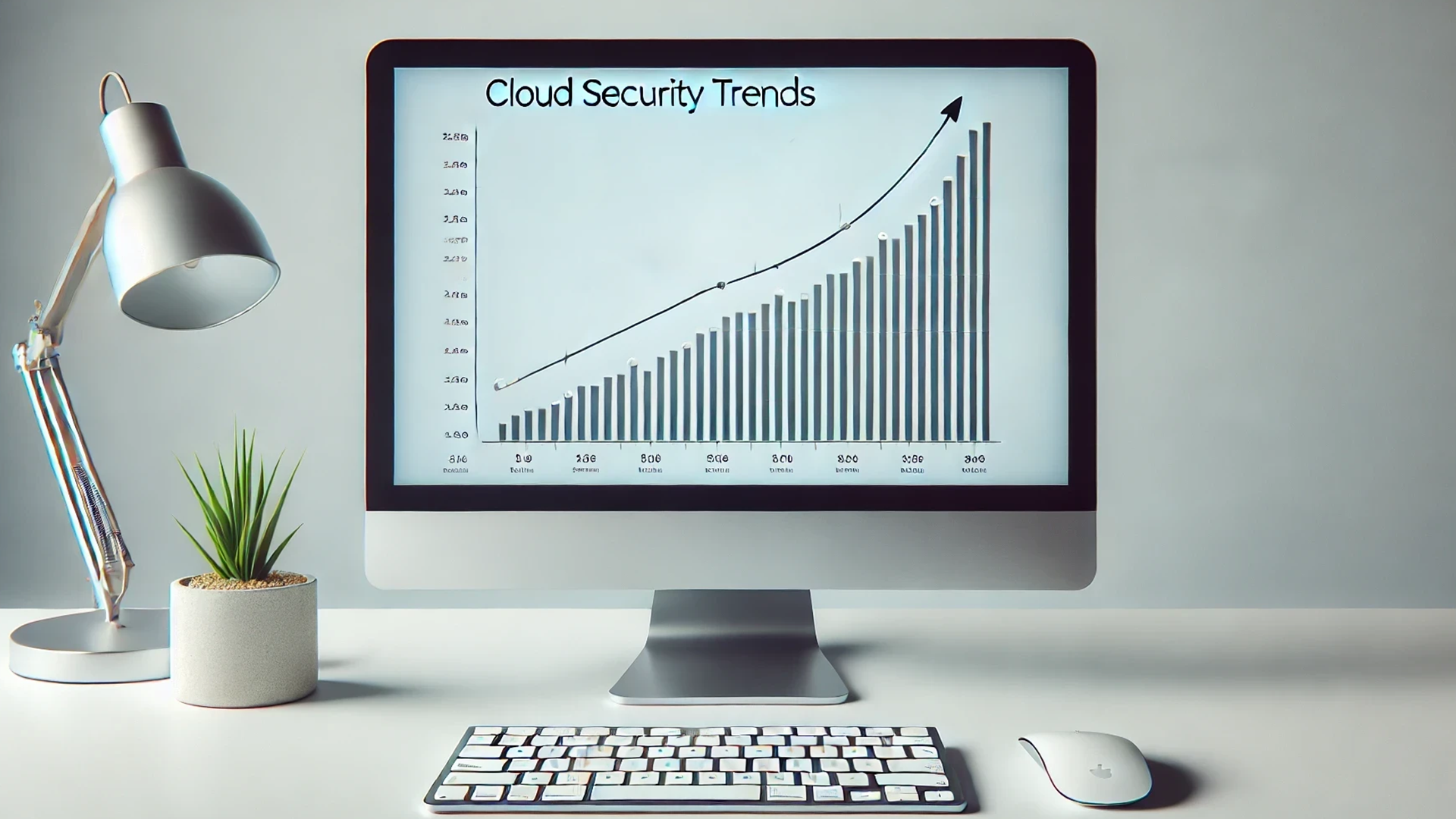
Thank you
Our team of industry domain experts combined with our guaranteed SLAs, our world class technology .


Get Immediate Help
In today’s rapidly evolving digital landscape, cloud computing has become a cornerstone of modern business operations. However, as enterprises increasingly migrate their critical data and applications to the cloud, the need for robust security measures has never been more paramount. Modern enterprise cloud security solutions are not just about protecting data—they're about enabling businesses to operate with confidence, knowing that their cloud environments are secure from emerging threats.
In this practical guide, we’ll explore the key components of modern enterprise cloud security, the latest trends, and the essential tools you need to protect your cloud environment. Whether you’re a seasoned IT professional or just beginning your cloud journey, this guide will provide you with actionable insights to enhance your cloud security posture.

Modern enterprise cloud security encompasses a comprehensive set of practices, technologies, and strategies designed to protect data, applications, and infrastructure hosted in the cloud. It’s about more than just firewalls and encryption; it involves dynamic access management, continuous monitoring, threat detection, and compliance with industry regulations. The goal is to create an end-to-end security framework that safeguards every aspect of your cloud environment, from identity and access management (IAM) to data protection and incident response.
As businesses continue to leverage cloud computing for flexibility and scalability, they also expose themselves to new risks. Cyber threats such as data breaches, ransomware, and insider attacks are on the rise, and without proper security measures, the consequences can be devastating. Enterprise cloud security solutions are designed to mitigate these risks, ensuring that your cloud environment is resilient against both known and emerging threats.
Key Components of Modern Enterprise Cloud Security
1. Identity and Access Management (IAM)
IAM is the cornerstone of cloud security. It ensures that only authorised users have access to sensitive data and systems within your cloud environment. Modern IAM solutions provide multi-factor authentication (MFA), single sign-on (SSO), and role-based access control (RBAC) to enforce strict security policies.
Practical Tip: Regularly review and update access permissions to ensure that users have only the access they need for their roles. Implement MFA wherever possible to add an extra layer of security.
2. Cloud Data Protection
Protecting data in the cloud involves encryption, data masking, and secure key management. Data should be encrypted both at rest and in transit to prevent unauthorised access. Additionally, enterprises should implement data loss prevention (DLP) tools to monitor and protect sensitive information.
Practical Tip: Use encryption as a default for all sensitive data and ensure that encryption keys are stored securely, separate from the data they protect.
3. Cloud Security Tools
A variety of tools are available to enhance your cloud security posture. These include cloud access security brokers (CASB), which provide visibility and control over cloud usage, and security information and event management (SIEM) systems, which collect and analyse security data from across your cloud environment.
Practical Tip: Choose cloud security tools that integrate seamlessly with your existing infrastructure and provide real-time monitoring and threat detection capabilities.
4. Dynamic Access Management
Dynamic access management adjusts user permissions in real-time based on context, such as location, device, and behaviour. This approach enhances security by ensuring that access is granted only when it’s truly needed and under secure conditions.
Practical Tip: Implement dynamic access management to reduce the risk of insider threats and ensure that access to sensitive data is always under control.
5. Cloud Vulnerability Management
Regular vulnerability assessments are essential to identify and address security weaknesses in your cloud environment. Modern enterprise cloud security solutions include automated vulnerability scanning tools that detect and prioritise vulnerabilities based on their risk level.
Practical Tip: Schedule regular vulnerability scans and patch known vulnerabilities promptly to prevent them from being exploited by attackers.
6. Hybrid Cloud Security Solutions
Many enterprises operate in a hybrid cloud environment, combining public and private clouds with on-premises infrastructure. Securing a hybrid environment requires a unified security strategy that covers all components, ensuring consistent security policies across the board.
Practical Tip: Use a centralised security management platform to maintain visibility and control over your entire hybrid cloud environment, and ensure that security policies are applied consistently.
7. Cloud Security Compliance
Compliance with industry regulations is a critical aspect of cloud security. Modern enterprise cloud security solutions help businesses meet regulatory requirements such as GDPR, HIPAA, and PCI DSS by providing built-in compliance checks and reporting tools.
Practical Tip: Regularly audit your cloud environment for compliance with relevant regulations, and use automated tools to generate compliance reports and track any non-compliant activities.

The cloud security landscape is constantly evolving, with new technologies and approaches emerging to address the growing complexity of cloud environments. Here are some of the latest trends in enterprise cloud security:
1. Zero Trust Security Model
The Zero Trust model is gaining traction as a way to enhance cloud security. It operates on the principle that no user or device should be trusted by default, even if they are inside the network. Instead, all access requests are verified, and security policies are enforced at every stage.
2. Artificial Intelligence and Machine Learning
AI and ML are being used to enhance cloud security by automating threat detection and response. These technologies can analyse vast amounts of security data to identify patterns and anomalies, enabling faster and more accurate detection of potential threats.
3. Cloud Security Automation
Automation is becoming a key component of modern cloud security, with tools that automatically detect, respond to, and remediate security incidents. This reduces the burden on IT teams and ensures that security measures are applied consistently across the cloud environment.
4. Integration with DevOps
Security is increasingly being integrated into the DevOps process, a practice known as DevSecOps. This approach ensures that security is considered at every stage of the development lifecycle, from design to deployment, reducing the risk of vulnerabilities being introduced into cloud applications.

Despite the benefits of modern enterprise cloud security solutions, implementing them effectively can be challenging. Here are some common challenges businesses face:
1. Complexity of Cloud Environments
As cloud environments become more complex, with multiple platforms and services in use, maintaining a consistent security posture can be difficult. Enterprises must ensure that security measures are applied uniformly across all cloud services and environments.
2. Lack of Visibility
Gaining full visibility into cloud environments is essential for effective security management. However, many businesses struggle to achieve this due to the decentralised nature of cloud services.
3. Data Privacy and Compliance
Ensuring data privacy and compliance with regulations such as GDPR can be challenging in the cloud, particularly when data is stored across multiple jurisdictions.

To overcome these challenges and ensure a robust cloud security posture, consider the following best practices:
1. Develop a Cloud Security Roadmap: Start with a clear roadmap that outlines your cloud security strategy, including objectives, key milestones, and the tools and technologies you’ll use.
2. Adopt a Multi-Layered Security Approach: Implement multiple layers of security, including firewalls, encryption, IAM, and monitoring, to protect your cloud environment from all angles.
3. Regularly Assess and Update Security Measures: Continuously evaluate your security posture and update your security measures as needed to address new threats and vulnerabilities.
4. Engage a Trusted Security Partner: Consider partnering with a cloud security provider that can offer expertise, tools, and ongoing support to help you manage your cloud security effectively.
In the context of implementing modern enterprise cloud security solutions, the following Microminder CS services would be particularly beneficial for organisations:
1. Cloud Security Solutions
- Comprehensive Security Coverage: This service provides a full suite of tools and practices designed to protect data, applications, and infrastructure in the cloud. It includes everything from encryption and access controls to threat detection and response.
- Tailored to Enterprise Needs: The solutions can be customised to fit the specific security needs of an enterprise, ensuring that the organisation's unique challenges and regulatory requirements are addressed.
2. Identity and Access Management (IAM) Services
- Secure Access Control: IAM services ensure that only authorised users can access sensitive data and systems in the cloud. This is crucial for maintaining security across a distributed cloud environment.
- Multi-Factor Authentication: Implementing MFA adds an additional layer of security, reducing the risk of unauthorised access even if credentials are compromised.
3. Security Architecture Review Services
- Optimised Security Design: This service helps organisations design or review their existing cloud security architecture, ensuring it aligns with best practices and the latest security standards.
- Identification of Gaps: Through a thorough review, Microminder CS can identify vulnerabilities or gaps in an organisation’s security posture, providing recommendations for improvement.
4. Cloud Penetration Testing Services
- Identifying Vulnerabilities: Regular penetration testing is crucial for identifying and addressing security weaknesses before they can be exploited by attackers.
- Continuous Security Improvement: By conducting regular tests, organisations can continuously improve their cloud security measures, ensuring that they are prepared for emerging threats.
5. Managed Detection and Response (MDR) Services
- 24/7 Monitoring: MDR services provide continuous monitoring of your cloud environment, detecting and responding to threats in real-time. This helps prevent security incidents from escalating.
- Advanced Threat Intelligence: These services leverage threat intelligence to detect sophisticated threats that might go unnoticed by standard security tools.
6. Cloud Security Compliance and Regulatory Services
- Ensuring Compliance: This service helps organisations navigate the complex landscape of cloud security regulations, ensuring that they meet all necessary compliance requirements.
- Audit Preparedness: Microminder CS assists in preparing for audits by ensuring that all security measures are properly documented and aligned with regulatory standards.
7. Cloud Access Security Broker (CASB) Services
- Visibility and Control: CASB services provide visibility into cloud usage and enforce security policies across cloud services, helping to protect data and ensure compliance.
- Risk Management: By controlling and monitoring access to cloud resources, CASB services help mitigate risks associated with shadow IT and unauthorised cloud usage.
Modern enterprise cloud security is not just about protecting data; it’s about enabling businesses to operate securely and efficiently in the cloud. By implementing a comprehensive cloud security strategy that includes IAM, data protection, dynamic access management, and continuous monitoring, businesses can mitigate risks, ensure compliance, and support their overall business objectives.
At the end of the day, investing in robust cloud security solutions is not just about avoiding security incidents—it’s about building a secure foundation for your business’s future success.
Don’t Let Cyber Attacks Ruin Your Business
Call
UK: +44 (0)20 3336 7200
KSA: +966 1351 81844
UAE: +971 454 01252
Contents
To keep up with innovation in IT & OT security, subscribe to our newsletter
Recent Posts
Penetration Testing | 10/11/2025
Cloud Security | 07/11/2025
Cybersecurity | 06/11/2025
What is enterprise cloud security?
Enterprise cloud security involves a set of practices, technologies, and policies designed to protect data, applications, and infrastructure in cloud environments. It includes tools for identity and access management, data protection, threat detection, and compliance.Why is cloud security important for enterprises?
Cloud security is crucial for protecting sensitive data, ensuring compliance with regulations, and preventing cyberattacks. It helps safeguard the enterprise’s digital assets and ensures business continuity by mitigating risks associated with cloud computing.What are the key components of a modern enterprise cloud security strategy?
Key components include identity and access management (IAM), encryption, threat detection and response, cloud vulnerability management, compliance management, and security monitoring. These elements work together to create a comprehensive security framework.How does identity and access management (IAM) enhance cloud security?
IAM controls who can access cloud resources and under what conditions, reducing the risk of unauthorised access. It includes features like multi-factor authentication (MFA) and role-based access control (RBAC) to enforce strict security policies.What are cloud access security brokers (CASB) and how do they work?
CASBs are security solutions that act as intermediaries between cloud service users and cloud providers, enforcing security policies and providing visibility into cloud usage. They help protect sensitive data and ensure compliance with regulations.